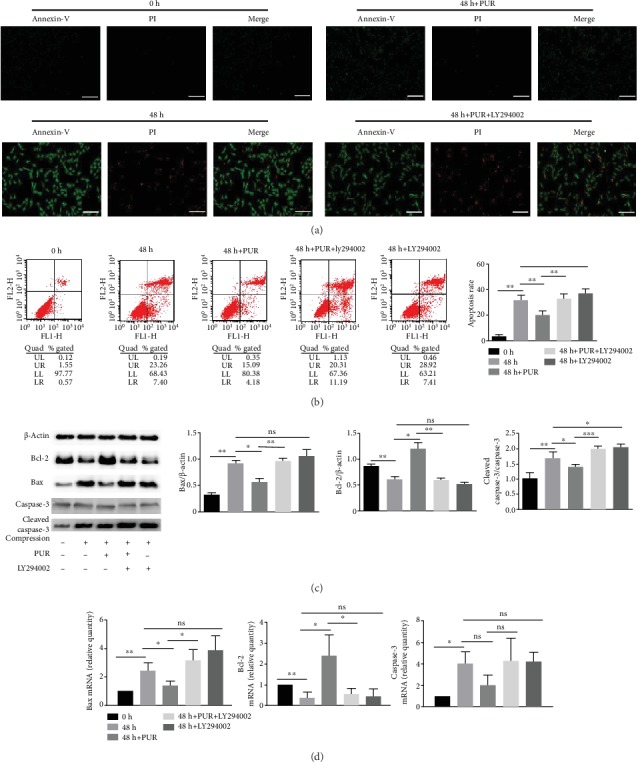Figure 3.

PUR relieved compression-induced apoptosis in human NPMSCs through the PI3K/Akt pathway. (a) Annexin-V/PI staining image indicating the protective role of PUR on compression-induced cell apoptosis through the PI3K/Akt signaling pathway. Green fluorescence represents apoptotic cells in the early stage, whereas red fluorescence represents apoptotic cells in the late stage (scale bars = 50 μm). (b) Apoptosis rate of NPMSCs was determined by flow cytometry; histogram analysis shows the percentage of apoptotic human NPMSCs (Annexin+/PI- plus Annexin+/PI+). Gene expressions (Bcl-2, Bax, and caspase-3) and protein level (Bcl-2, Bax, caspase-3, and cleaved caspase-3) were analyzed by (c) western blotting and (d) real-time PCR. Compression: compression loading for 48 h. Data are presented as means ± SD (n = 3) (ns: no significance, ∗P < 0.05, ∗∗ P < 0.01, ∗∗∗P < 0.001, and ∗∗∗∗P < 0.0001, between two groups). PUR: puerarin; NPMSCs: nucleus pulposus mesenchymal stem cells.
